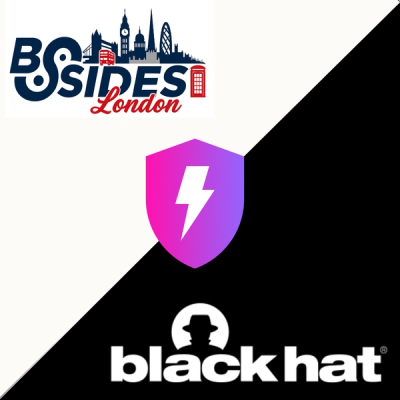UI-Router angular-hybrid

UI-Router support for Hybrid Angular/AngularJS apps
This module provides ngUpgrade integration with UI-Router.
It enables UI-Router to route to both AngularJS components (and/or templates) and Angular components.
Your app will be hosted by AngularJS while you incrementally upgrade it to Angular.
With @uirouter/angular-hybrid you can use either an Angular component or an AngularJS component/template as the view in a state definition.
import { Ng2AboutComponentClass } from "./about.ng2.component";
$stateProvider.state({
name: 'home',
url: '/home',
component: 'ng1HomeComponent'
})
.state({
name: 'about',
url: '/about',
component: Ng2AboutComponentClass
});
.state({
name: 'other',
url: '/other',
template: '<h1>Other</h1>',
controller: function($scope) { }
})
When routing to an Angular component, that component uses the standard
Angular directives (ui-view and uiSref) from @uirouter/angular.
When routing to an AngularJS component or template, that component uses the standard
AngularJS directives (ui-view and ui-sref) from @uirouter/angularjs.
See the hybrid sample app for a full example.
Getting started
Remove angular-ui-router (or @uirouter/angularjs) from your AngularJS app's package.json and replace it with @uirouter/angular-hybrid.
Add the @angular/* dependencies.
dependencies: {
...
"@angular/common": "^6.0.0",
"@angular/compiler": "^6.0.0",
"@angular/core": "^6.0.0",
"@angular/platform-browser": "^6.0.0",
"@angular/platform-browser-dynamic": "^6.0.0",
"@angular/upgrade": "^6.0.0",
...
"@uirouter/angular-hybrid": "^6.0.0",
...
}
Remove any ng-app attributes from your main HTML file.
We need to use manual AngularJS bootstrapping mode.
Add AngularJS module ui.router.upgrade
- Add 'ui.router.upgrade' to your AngularJS app module's depedencies
let ng1module = angular.module('myApp', ['ui.router', 'ui.router.upgrade']);
example
Create a root Angular NgModule
- Import the
BrowserModule, UpgradeModule, and a UIRouterUpgradeModule.forRoot() module.
- Add
providers entry for any AngularJS services you want to expose to Angular.
- The module should have a
ngDoBootstrap method which calls the UpgradeModule's bootstrap method.
export function getDialogService($injector) {
return $injector.get('DialogService');
}
@NgModule({
imports: [
BrowserModule,
UpgradeModule,
UIRouterUpgradeModule.forRoot({ states: [contactsFutureState] }),
],
providers: [
{ provide: NgModuleFactoryLoader, useClass: SystemJsNgModuleLoader },
{ provide: 'DialogService', deps: ['$injector'], useFactory: getDialogService },
{ provide: 'Contacts', deps: ['$injector'], useFactory: getContactsService },
]
})
export class SampleAppModuleAngular {
constructor(private upgrade: UpgradeModule) { }
ngDoBootstrap() {
this.upgrade.bootstrap(document.body, [sampleAppModuleAngularJS.name], { strictDi: true });
}
}
example
Defer intercept
Tell UI-Router that it should wait until all bootstrapping is complete before doing the initial URL synchronization.
ngmodule.config(['$urlServiceProvider', ($urlService: UrlService) => $urlService.deferIntercept()]);
example
Bootstrap the app
- Bootstrap Angular
- Angular runs ngDoBootstrap() which bootstraps AngularJS
- Chain off
bootstrapModule() and tell UIRouter to synchronize the URL and listen for further URL changes
- Do this in the Angular Zone to avoid "digest already in progress" errors.
platformBrowserDynamic()
.bootstrapModule(SampleAppModuleAngular)
.then((platformRef) => {
const urlService: UrlService = platformRef.injector.get(UIRouter).urlService;
function startUIRouter() {
urlService.listen();
urlService.sync();
}
platformRef.injector.get < NgZone > NgZone.run(startUIRouter);
});
example
Route to AngularJS components/templates
Your existing AngularJS routes work the same as before.
var foo = {
name: 'foo',
url: '/foo',
component: 'fooComponent'
};
$stateProvider.state(foo);
var bar = {
name: 'foo.bar',
url: '/bar',
templateUrl: '/bar.html',
controller: 'BarController'
};
$stateProvider.state(bar);
Route to Angular components
Register states using either Angular or AngularJS code.
Use component: in your state declaration.
var leaf = {
name: 'foo.bar.leaf',
url: '/leaf',
component: MyNg2CommponentClass
};
$stateProvider.state(leaf);
Create Angular Feature Modules (optional)
@NgModule({
imports: [
UIRouterUpgradeModule.forChild({
states: [featureState1, featureState2],
}),
],
declarations: [FeatureComponent1, FeatureComponent2],
})
export class MyFeatureModule {}
example
Add the feature module to the root NgModule imports
@NgModule({
imports: [BrowserModule, UIRouterUpgradeModule.forChild({ states }), MyFeatureModule],
})
class SampleAppModule {}
example
Limitations:
Nested Routing
We currently support routing either Angular (2+) or AngularJS (1.x) components into an AngularJS (1.x) ui-view.
However, we do not support routing AngularJS (1.x) components into an Angular (2+) ui-view.
If you create an Angular (2+) ui-view, then any nested ui-view must also be Angular (2+).
Because of this, apps should be migrated starting from leaf states/views and work up towards the root state/view.
Resolve
Resolve blocks on state definitions are always injected using AngularJS style string injection tokens.
- UI-Router for AngularJS injects objects using string tokens, such as
'$transition$', '$state', or 'currentUser'.
resolve: {
roles: ($authService, currentUser) => $authService.fetchRoles(currentUser);
}
- UI-Router for Angular uses the Transition.injector() API.
The resolve function receives the
Transition object as the first argument.
export const rolesResolver = (transition) => {
const authService = transition.injector().get(AuthService);
const currentUser = transition.injector().get('currentUser');
return authService.fetchRoles(currentUser);
}
...
resolve: {
roles: rolesResolver
}
In UI-Router for Angular/AngularJS hybrid mode, all resolves are injected using AngularJS style.
If you need to inject Angular services by class, or need to use some other token-based injection such as an InjectionToken,
access them by injecting the $transition$ object using string-based injection.
Then, use the Transition.injector() API to access your services and values.
import { AuthService, UserToken } from './auth.service';
export const rolesResolver = function ($transition$) {
const authService: AuthService = transition.injector().get(AuthService);
const user = transition.injector().get(UserToken);
return authService.fetchRoles(user).then((resp) => resp.roles);
};
export const NG2_STATE = {
name: 'ng2state',
url: '/ng2state',
component: Ng2Component,
resolve: {
roles: rolesResolver,
},
};
onEnter/Exit/Retain
When a state has an onEnter, onExit, or onRetain, they are always injected (AngularJS style),
even if the state uses Angular 2+ components or is added to an UIRouterUpgradeModule NgModule.
export function ng2StateOnEnter(transition: Transition, svc: MyService) {
console.log(transition.to().name + svc.getThing());
}
ng2StateOnEnter.$inject = [Transition, 'MyService'];
export const NG2_STATE = {
name: 'ng2state',
url: '/ng2state',
onEnter: ng2StateOnEnter,
};
Examples
The minimal example of @uirouter/angular-hybrid can be found here:
https://github.com/ui-router/angular-hybrid/tree/master/example
A minimal example can also be found on stackblitz:
https://stackblitz.com/edit/ui-router-angular-hybrid
A large sample application example with lazy loaded modules can be found here:
https://github.com/ui-router/sample-app-angular-hybrid
The same sample application can be live-edited using Angular CLI and StackBlitz here:
https://stackblitz.com/github/ui-router/sample-app-angular-hybrid/tree/angular-cli
UpgradeAdapter vs UpgradeModule
Version 2.0.0 of @uirouter/angular-hybrid only supports UpgradeAdapter, which works fine but is no longer in development.
Version 3.0.0+ of @uirouter/angular-hybrid only supports UpgradeModule from @angular/upgrade/static, which is what the Angular team actively supports for hybrid mode.
Because we dropped support for UpgradeAdapter, current users of @uirouter/angular-hybrid 2.x will have to switch to UpgradeModule when upgrading to 3.x.



